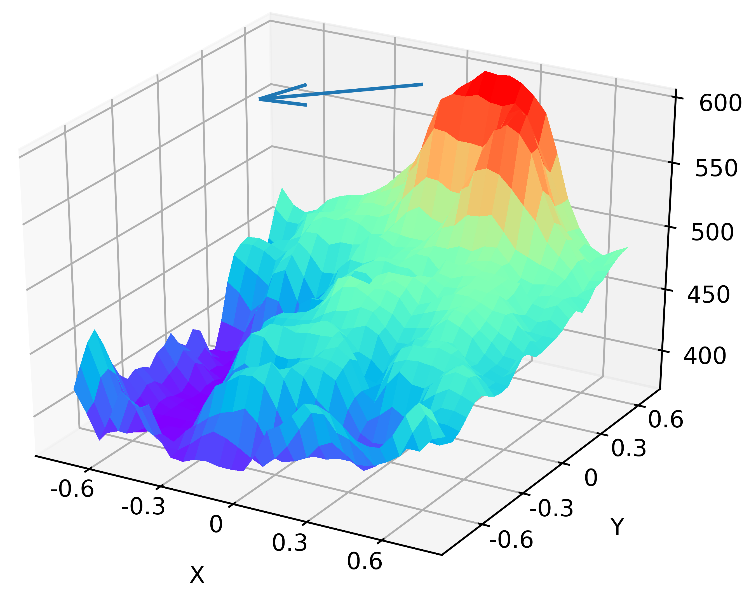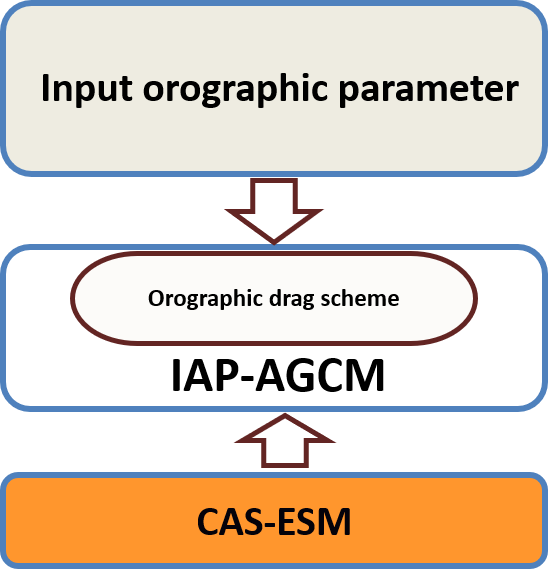中国科学院大气物理研究所大气科学和地球流体力学数值模拟国家重点实验室
State Key Laboratory of Numerical Modeling for Atmospheric Sciences and
Geophysical Fluid Dynamics (LASG)
Institute of Atmospheric Physics, Chinese Academy of Sciences
State Key Laboratory of Numerical Modeling for Atmospheric Sciences and
Geophysical Fluid Dynamics (LASG)
Institute of Atmospheric Physics, Chinese Academy of Sciences

Vol.16/No.16 December 2021
Scientists Improve Simulation of the Climate in the Complex Terrain through Explicit Representation of the Orographic Anisotropy for All Flow Directions in the Model
"We need to improve the model's ability to simulate the mountain climate", said Dr. XIE Jinbo from the Institute of Atmospheric Physics at the Chinese Academy of Sciences, "Incorporation of the orographic anisotropy, is one of the most crucial aspect for sub-grid orographic drag parameterization known for its high uncertainty, and can contribute to better simulation of the mountain climate and its application in mountain studies."

Fig.1 Schematic map of the orographic asymmetry (OA) under an idealized topography. The direction vector depicts the OA inclination vector defined as the normalized vector between the model's center grid point and the "center of mass" of the subgrid mountain heights. The x and y axes represent the west‐to‐east and south‐to‐north directions, respectively. (Image by IAP)

Fig. 2 Coupling of the orographic drag scheme with the CAS-ESM. (Image by IAP)
Dr. XIE and his collaborators developed a new orographic drag scheme on through refining the method for derivation of orographic parameters for all flow directions, and then coupled new scheme with the Chinese Academy of Sciences – Earth System Model (CAS-ESM), to test its impact on model climate. Compared with the earlier version, the updated model has shown to have better wind and temperature simulation in the complex terrain region such as the Himalayas, a region well-known for its notorious bias due to mis-representation of its steep elevation and complex terrain in the model.
"Incorporating this effect can enhance the model's application in forecast and prediction in the mountain climate", Dr. XIE believes, "With the new model, we may help to forecast and predict how much wind or precipitation may affect the mountain climate on various time from seasonal to multi-decadal scale. This would benefit the society through disaster warning for regions such as the DaLiangShan known for its intense rainfall and debris flow."
This series of studies have been published in the special section "The Chinese Academy of Sciences Climate and Earth System Models (CAS-FGOALS and CAS-ESM) and Applications" in Journal of Geophysical Research- Atmosphere and Journal of Advances in Modeling Earth Systems.
Citation:
1) Xie, J., Zhang, M., Zeng Q., Xie, Z., Liu, H., Chai, Z., He, J. X., & Zhang, H. (2021). Implementation of an orographic drag scheme considering orographic anisotropy in all flow directions in the Earth System Model CAS-ESM 2.0. Journal of Advances in Modeling Earth Systems. https://doi.org/10.1029/2021MS002585
Link: https://agupubs.onlinelibrary.wiley.com/doi/10.1029/2021MS002585
2) Xie, J., Zhang, M., Xie, Z., Liu, H., Chai, Z., He, J. X., & Zhang, H. (2020). An orographic drag parametrization scheme including orographic anisotropy for all flow directions. Journal of Advances in Modeling Earth Systems, 12, e2019MS001921. https://doi.org/10.1029/2019MS001921
Link: https://agupubs.onlinelibrary.wiley.com/doi/10.1029/2019MS001921
Contact:XIE Zhenghui, zxie@lasg.iap.ac.cn
Add: No.40, Huayanli, Beichen West Road, Chaoyang District, Beijing P.O. Box 9804, 100029, China
E-mail: lasg_newsletter@lasg.iap.ac.cn
Editors: Chuanyi Wang (wangcy@lasg.iap.ac.cn), Kangjun Chen(ckj@lasg.iap.ac.cn)
E-mail: lasg_newsletter@lasg.iap.ac.cn
Editors: Chuanyi Wang (wangcy@lasg.iap.ac.cn), Kangjun Chen(ckj@lasg.iap.ac.cn)